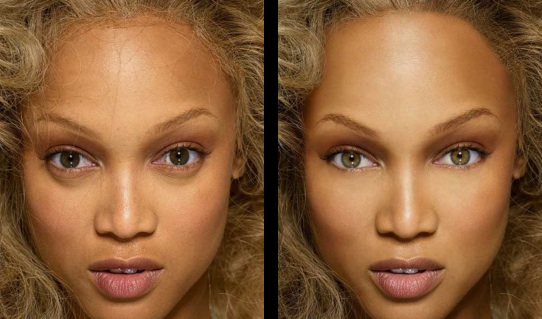Although the readings done from this class may have been written before the birth of myself and my classmates, they are more true now than ever before about advertising images and their power over women and their self esteem. Our modern world hurls more idealized and photoshopped images of women than ever before, the magazine and print world is becoming dated--women are bombarded with more self destructing and deadly images online.
Something I found interesting in Gloria Steinem’s “Sex, Lies and Advertising” reading was the fact that the advertisements not only funded the magazine, but directed its content. Steinem outlined her various experiences with companies that refused to advertise with Ms. Magazine because of its feminist thoughts and intellectual readers broke the hetero-normative formula that is tried and true in other female-centric publications. The companies didn’t agree with the open forum of thought, and many of the articles published- a primary reason they refused for their ads to be placed. This was very revealing to me that advertisements aren’t just strewn about the latest issue of Glamour, but encoded into the articles as well. “Agreed to try the ad-free, reader-supported Ms. you hold now and to give us complete editorial control” (Steinem 120) This states that magazines with advertisements are not unique in thought, and articles are being used to sold products subliminally- readers can’t decipher an ad from an article!
Found in the advertisements (and articles) in the magazines we devour, the online realm, and on television are a medley of stereotypes surrounding femininity. There is the archetype of the “mother/nurturer” someone who equates love with food, and who would rather serve her family than eat in public. Flipping John Berger’s “men act, and women appear” to “men eat and women prepare”(Bordo 119) Also as discussed in class, the fact that women should be seen and not heard, the “more you subtract the more you add.” Contradicting this a woman must be small in personality as well as quiet, but express herself in things she has control over, clothing makeup etc. Advertising is designed to put women down, make them insecure about themselves, and offer a material solution to the physical problems they strategically pointed out.
And we believe it! And we feel insecure! Knowing better, we have all heard about the photoshopped images, manipulated to the point where they don’t resemble who was photographed and objectified. But as stated in "Beauty and the Beast of Advertising", the women’s magazine resembles an older, trustworthy female relative, a mentor, simply because it is the “serious mass-market women’s journalism available.” (Killbourne 75)
The authors of the articles are swayed by advertiser’s wants, offering mixed messages to the female readership. Confused by the “Love the skin you’re in” articles while simultaneously ingesting the “waif” model has deadly consequences. Instead of being taught to be forever maternal, girls are encouraged to be forever beautiful, as appearance is the most important thing they could provide. Forever young, forever innocent.
 |
| Agelessness and lack of sexual desire are implied in this ad, where the child is objectified. |
Advertising in such a conflicting and emotionally crushing won’t stop because it has proven so profitable. I think showing the viewers of the mass media just how the images that we measure ourselves against are so manipulated. http://collegecandy.com/2012/04/21/54-photoshopped-celebrity-before-and-after-photos/#photo=2
 |
| Even Tyra can't live up to her own standard of beauty! |
Works Cited:
Killbourne, Jean. "Beauty and the Beast of Advertising" Race, Class and Gender and Integrated Study. Ed. Paula Rothenberg 2nd. ed. New York: St. Martin's 1992
Steinem, Gloria. "Sex, lies & advertising." Ms 8.2 (1997):18.
No comments:
Post a Comment